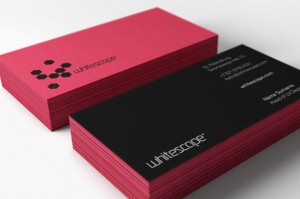Business cards are a modern-day variation of calling cards and trade cards. Calling cards were used as ways of introduction. These were used by messengers to reveal the arrival of their superiors ahead of time.
 The cards gathered would work as a list of who came and went, and whose visit was to be reciprocated. Just like their original function, business cards function as a reminder of a social or business encounter.
The cards gathered would work as a list of who came and went, and whose visit was to be reciprocated. Just like their original function, business cards function as a reminder of a social or business encounter.
The individual the card has been left with will have a tangible reminder of the conference and is left with the owner of the contact info. Quickly enough, the need to exchange contact info grew. Developments in printing assisted the evolution of more fancy and colorful cards. Nevertheless, this trend was cancelled by a requirement for easier and less expensive cards. This sort of printing was too expensive for automation.
The best business cards might include either individual information or info about the business they are connected with. Business owners and small or home office specialists who don’t have huge marketing systems rely largely on word of mouth and business cards. Today, however, company cards have actually evolved from just being notepads printed with plain text to cards that have striking visual graphics. This, naturally, leaves more of a lasting impression.
There are many types of cards in the form of different media. Wood, fabric, plastic, metal and magnets are a few of the materials used by businesses that want to distinguish themselves. Just recently, some companies made use of cd-rom business cards that are rectangular or elliptical in shape that are approximately about the same size as a standard card. These cards fit in the cd-rom tray of a cd drive that is 80 mm or less.
It plays in the majority of cd- drives however will  not play in slot-loading drives due to the fact that of their irregular shape. Nevertheless, paper or card continues to be the most popular medium. The worldwide standard size of a company card would have the same measurements of a routine credit card. The most common measurement would be 3.5 by 2 inches or 89 by 51 mm. Some invert the requirement and print their text vertically instead of horizontally.
not play in slot-loading drives due to the fact that of their irregular shape. Nevertheless, paper or card continues to be the most popular medium. The worldwide standard size of a company card would have the same measurements of a routine credit card. The most common measurement would be 3.5 by 2 inches or 89 by 51 mm. Some invert the requirement and print their text vertically instead of horizontally.
Quality business cards use spot colors on offset printing presses. The majority of these cards that do not include complete color photos go through a process that, depending upon the variety of colors you use, a two color procedure. The variety of colors, you make use of for your logo, and the color background of the card defines the variety of inks used to print it.
Some more elaborate company cards use a raised-print effect. Thermography is now used because it is much cheaper than making use of engraved plates. This process uses melted plastic to follow the ink on the card. Another would be printing on lighter paper making use of a digital photo copier that prints directly on the surface of the card. To compensate, the card is either laminate or covered to make it more durable. The type of card, you will use will certainly depend on the image you want your company or business to have.

One Reply to “How Business Cards Came About”
Comments are closed.